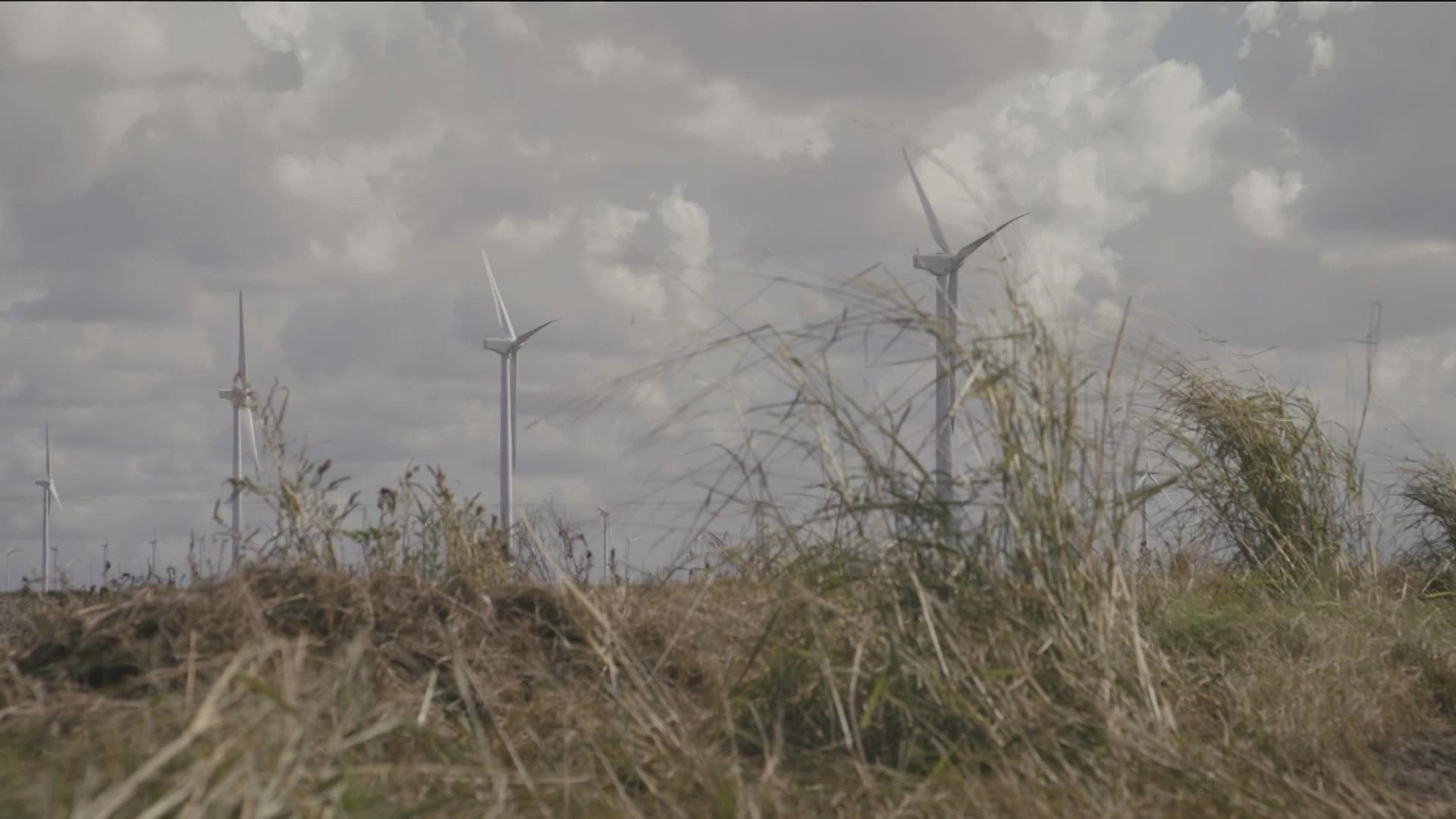AUSTIN, Texas — Ranch life is a big responsibility for Rancher Whit Jones.
Established in 1890, Jones keeps the South Texas land valuable and cattle healthy. His family established the ranch in 1890.
“We can sit around and talk about it all day long. It's a great industry,” Jones said.
The ranch is more than an income, it’s more than a family legacy — and power companies want a piece.
“It's almost annually that we're presented with either a potential rail line or a new transmission line,” Jones said.
The ranch is located in Jim Hogg County, near the Mexico border. Department of Energy (DOE) data shows this area is usually sunny and windy, prime for renewable energy.
“I think we need to play catchup,” Dr. Joshua Rhodes, Ph.D, research associate at the Webber Energy Group/Energy Institute at the University of Texas at Austin.
A deadly winter storm in February 2021 left millions without power. Temperatures stayed in the single digits for days. Hundreds died. Investigations revealed power plants and natural gas lines weren’t properly weatherized.
Long story short, the state needs more power.
“If you look at the power plants that are trying to get built in the system right now, it's a lot of wind and solar because that's the cheapest thing there is to build and there is a high demand for it,” Rhodes said.
There are more places to build wind and solar, Rhodes said. We need more ways to get that energy across the state.
"It's converted into high voltage, alternating current that's put on these basically large, long, metal ropes that are held up by these big poles. Then it's moved all the way from out there to here," Rhodes said.
Those poles and ropes, called transmission lines, carry the wind and solar energy to a substation. There, electricity is transformed into a lower voltage so it can go to homes.
As more people come to Texas, the State has more demand for electricity. Electric companies and power generators need efficient, reliable transmission lines to carry large loads of energy.
A surge in demand can cause congestion on the lines. Congestion costs consumers more money and threatens reliability.
Projects take years of planning, obtaining easements, permitting and construction.
“We want to promote grid reliability. If anything the February storms taught us it's that we we do need to fix things,” said Patrick Resnick, attorney with Braun & Gresham, PLLC.
Resnick and attorney Carly Barton said companies first map out dozens of possible locations to build transmission lines. Considerations include environmental impact, homes and cost. Power lines pass through private property. It can put owners on edge
“What's it going to do to the land? How is it going to be damaged? How will it be devalued,” Resnick said.
The land can be taken by force.
“Once the route is selected for the transmission line, it does go into condemnation. It's the only time the landowner is ever going to get compensated for this easement that will never go away,” Barton said.
An easement gives the right to use someone else’s land. Landowners still own the land but companies can build whatever they want, as long as it meets the terms of the easement.
“There is definitely room for compromise,” Barton said.
The Public Utility Commission of Texas balances the State’s needs, company spending and landowner concerns. Landowners may support a transmission line but request a specific structure.
“My support for 16 miles was on the condition for the use of monopole structures,” landowner Scott Roots told the PUC commissioners.
Roots said he is a farmer, and the lattice structures would hurt his business because he wouldn’t be able to use his tractor around it. Commissioners allowed the lattice structures in order to save on the estimated cost.
Everyone who has a utility bill splits the price for transmission lines and maintenance.
“I recognize the importance of [transmission lines]. It’s just upsetting, though, because you don't get much choice on if you want them or not,” Jones said.
Jones fought against a transmission project set to cut through the center of his ranch. He would lose business.
“It basically consumed me for about two years,” Jones said.
Jones and Resnick found other landowners who wanted to sell easements. They proposed a new route for the lines and at a lower cost.
“The transmission line in itself isn't such an issue. The issue has to do with what follows the transmission line. In today's world, that’s most likely wind farms,” Jones said.
Big wind turbines line the landscape in South Texas.
“It's kind of an ethical conundrum because when you put these things up, it's not just you're putting them up and it's affecting you, but you're also affecting your neighbor and everybody else that has to look at it and deal with it,” Jones said.
The Texas power grid manager's Long-Term West Texas report shows the state needs "technologies beyond typical 345-kV circuit additions." PUC is currently studying how distributed energy resources can be used as an ancillary service.
“I think we'll be better off if we take a technology-agnostic approach, if we don't mandate certain technologies, if we just mandate a certain level of reliability on the system,” Rhodes said.
Jones sells some energy off his land, and DOE researchers have geothermal energy projects underway. He said he would consider solar farms.
“We appreciate green energy as much as anybody else does, but it's got to work,” Jones said.
Those projects could lead to more transmission lines.
“Our objective is not to shut it down. Our objective is, let's just be very thoughtful about how we do it. These are our properties. These are our homes. This is our land,” Jones said.
PEOPLE ARE ALSO READING:

